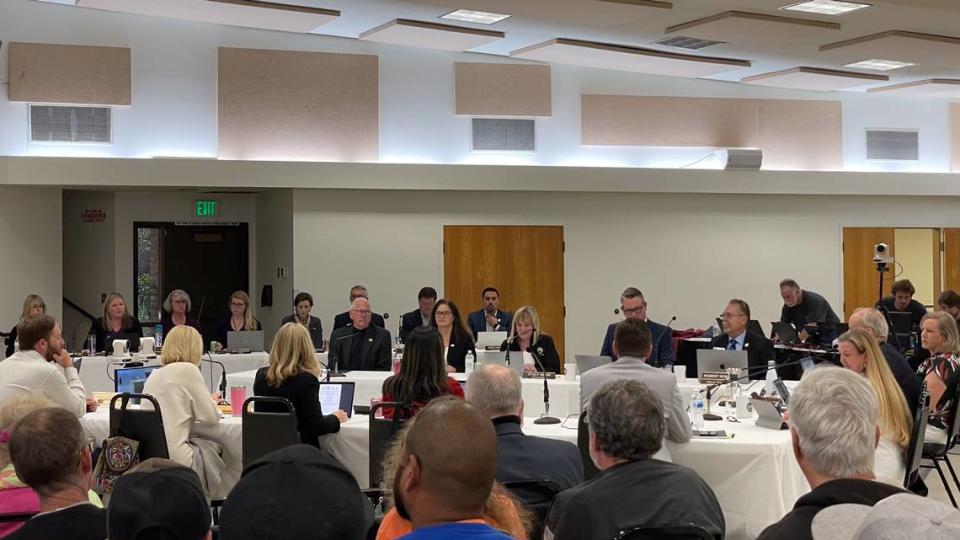What’s next for Central Coast Blue after 2 SLO County cities drop recycled water project?
Pismo Beach is moving forward alone on Central Coast Blue after two other South County cities voted to ditch the recycled water project.
The Central Coast Blue project was meant to provide a backstop of water in the event of drought conditions like those seen in the 2010s, but recent state budget cuts, rising project costs and the recent refilling of the groundwater basin and Lopez Lake reservoir have caused the member cities to reconsider the project’s future, Pismo Beach city manager Jorge Garcia said during Tuesday’s City Council meeting.
Though Grover Beach and Arroyo Grande elected to end their commitment to the project as prices skyrocketed, Pismo Beach will move forward alone as it continues to assess the project’s viability.
As the lead city and funding partner in the joint powers authority, Pismo Beach will wind down its existing costs, but is keeping the door open for other collaborators to join the joint powers authority in the interest of continuing to find a sustainable water solution.
“We cannot rely on our existing water sources to meet all of our current and anticipated future needs,” Garcia told the council.

Pismo Beach looking to assume control of Central Coast Blue
As part of the resolution passed by the City Council, city staff will submit a request to the Central Coast Blue Regional Recycled Groundwater Authority asking the Pismo Beach Public Financing Agency be added as a member.
Pismo Beach staff will also work with groundwater authority staff to request amendments to the joint powers authority’s agreement. Under these amendments, Pismo Beach would assume 100% of the project’s water purveyor contributions, effectively putting the city in the driver’s seat of the project going forward.
Previously, Pismo Beach was set to pay for 39% of project costs, while Grover Beach would pay for 36% and Arroyo Grande would pay the remaining 25% of project costs.
The City Council also directed staff to make an amendment to the agreement releasing the cities of Arroyo Grande and Grover Beach from their commitments to the project June 30 in lieu of the typical 180-day waiting period.
Pismo Beach staff will work with the other two member cities to wind down financial commitments to the project and pursue the viability of the Central Coast Blue project and other water options going forward, according to the resolution.
According to the staff report, there will still be opportunities to work with the two departing cities, along with other agencies that have a stake in water resiliency.

Going forward, the joint powers authority will remain operational after the other two cities have left, but will function at a diminished level, keeping the structure intact for future opportunities.
The project’s joint powers authority will consider membership changes and amendments to the agreement at its June 3 meeting, Garcia said.
Each member city’s city council will consider paths forward at a joint June 18 meeting, Garcia said.
“The first and foremost component of this for us is to preserve the option for a future project,” Garcia said. “We don’t know what that means quite yet, and we need to take time, be strategic and figure out what is our best option today, mid-term and long-term, not just for Pismo Beach, but also for the entire region. Water resiliency is not a discussion that ends at the conclusion of one meeting or at the conclusion of one project.”
